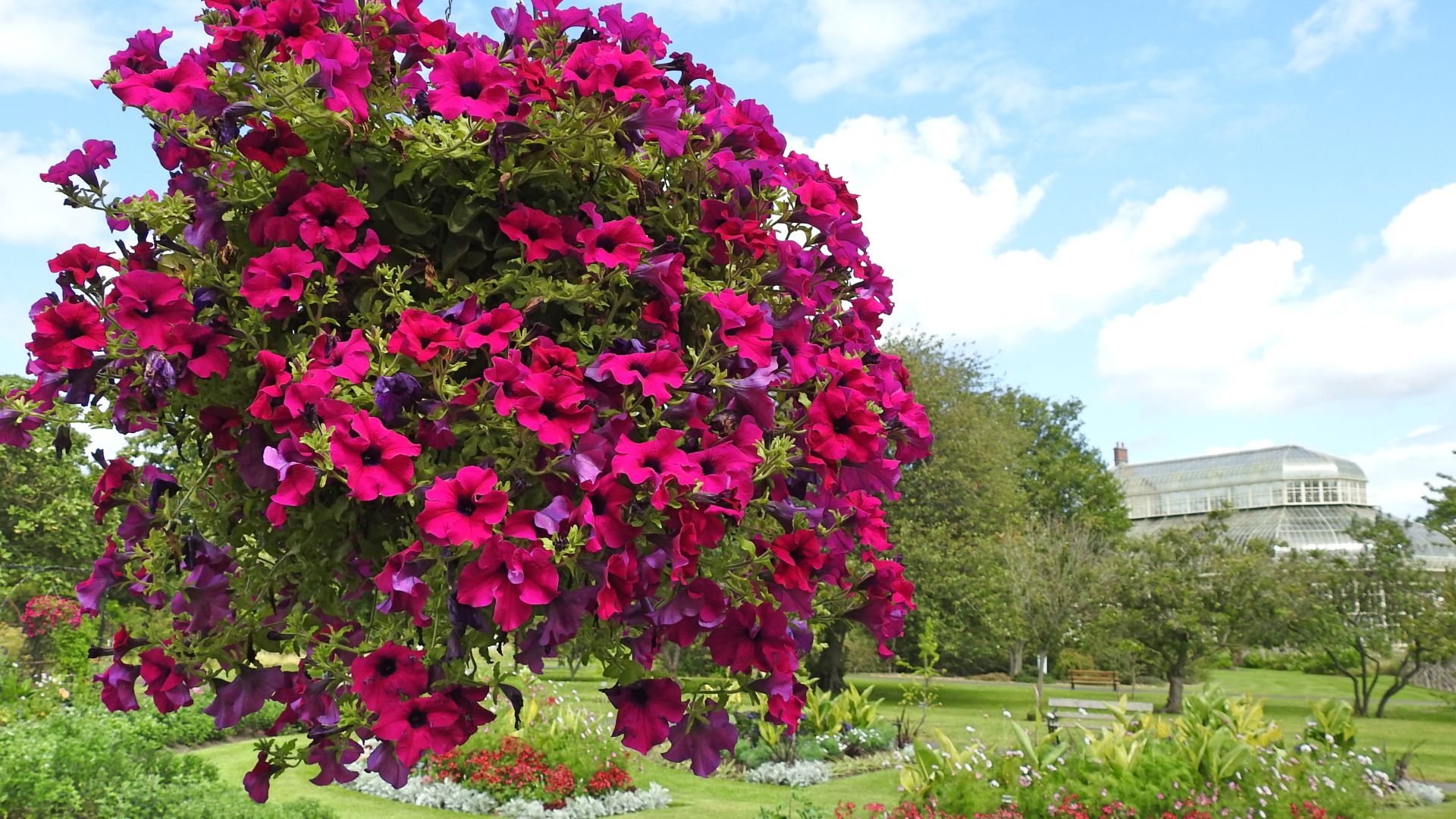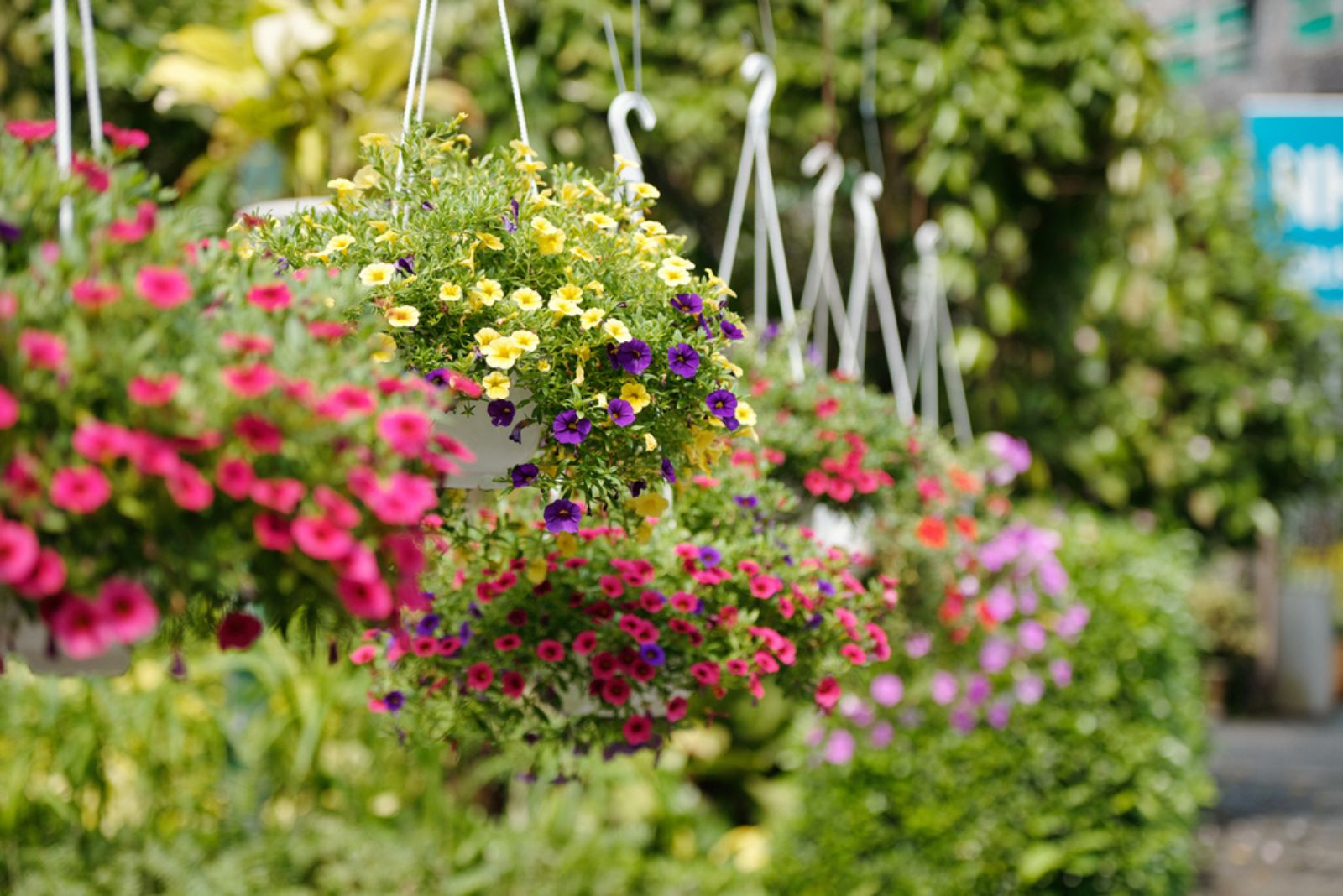Including a couple of hanging baskets brimming with flowers into your landscape can do a lot for it.
But not when they’re not flowering!
And did you know that there are a couple of simple tricks you can use to have them flourishing all summer long?
Let’s check them out!
1. Careful Positioning
Whether you love growing petunias in hanging baskets or some other flower, the key is to position them correctly to have them thriving all summer long.
We tend to plan our garden with extreme care, deciding which flower goes where, but then we’ll hang the hanging planters just about anywhere.
That’s the first mistake we make when growing plants this way. You have to be very careful about the positioning and place the hanging basket in a location where your plant will thrive.
Place your sun-loving petunias in a spot where they can get plenty of direct light or else the gorgeous flowers will fade. And if you have some trailing begonias or fuchsias in a hanging planter, hang them in a position a bit more protected from the direct sunlight to keep their colors bright.
Natural elements are also a big part of proper hanging basket care, so make sure to place these planters where harsh winds won’t hurt the plants inside.
This way you can avoid baskets falling, breaking, and damaging your flowers, and reduce the need for watering. That’s because strong air movements can dry out the soil and increase your irrigation chores.
Finally, make sure the planter is securely attached to the wall, ceiling, window, or fence. They become heavy after irrigation and the weight can pull them down, so it’s important to affix them securely.
And remember to rotate the hanging planters from time to time to have an even bloom, and deadhead the spent flowers to promote reblooming and have everything looking neat.
2. Thorough Watering
Potted plants or those grown in hanging planters dry out much faster than in-ground ones, so make sure to water them properly.
You’ll need to irrigate your hanging plants whenever you notice that the topsoil is dry and the basket is a bit lighter than before.
And, of course, smaller planters dry out faster than larger ones, so bear this in mind when watering your hanging garden.
Summers tend to be hot and dry, so make sure to irrigate your plants more frequently, such as once a day. And if you live in scorching climates, increase the watering frequency to twice a day.
Furthermore, the worst times to water your plants are at midday and night time, so make sure to alway irrigate them early in the morning or in the late afternoon.
Midday sun will increase evaporation and leave your plants dehydrated, while night watering will have them standing in water for too long, risking root rot.
Slowly pour water until you notice it has started to drain through the drainage holes. This promotes the development of a strong and deep root system, making the plant more resilient.
3. Regular Feeding
In addition to proper amounts of sunlight and water, plants require nutrients to thrive, and those grown in planters require more frequent fertilizing than in-ground ones.
That’s because there isn’t a vast expanse of soil where their roots can wander in search of minerals.
Potting mixes and soils contain nutrients and, usually, added plant food, so you don’t have to feed your plants soon after repotting.
However, once they run out, make sure to supplement them with fast-acting liquid fertilizers you’ll use 1-2 times a month or slow-release fertilizer you can apply once for the entire summer.
Of course, it all depends on the type of plant food you choose, so always make sure to follow the manufacturer’s instructions.


